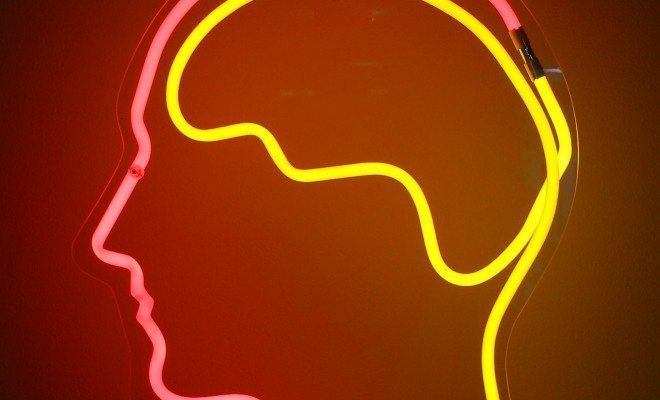 Image courtesy of [Dierk Schaefer via Flickr]
Image courtesy of [Dierk Schaefer via Flickr]
Health & Science
Mental Illness in Young Americans
The transition from teenage years to adulthood can be a stressful shift for many people. Making decisions that shape their future and becoming more self-sufficient can be made even more challenging with mental illness. Young adults between 18 and 25 have higher rates of mental illness and substance use disorder than adults 26 years of age and older. Some argue that rates of mental illness in contemporary young adults can be attributed in part to advancements in technology. By actively participating in social media, many of today’s youth compare themselves to their perceptions of their peers as modeled online. According to Larkin Callaghan of the 2×2 Project, a public health science site, teenagers especially “now rely so much on external and immediate gratification, social status and image, and the superficial gain they get from social media that they are forgoing values that contribute to a sound internal life.”
Existing data on mental illnesses in young Americans exposes the unfortunate reality that a significant portion face significant challenges.
- Nearly 6.4 million people aged 18 to 25 had mental illness, representing almost one in five young adults in America.
- 10.6 million people in 2012 reported an unmet need for mental health care.
Even though adolescents and young adults are extremely vulnerable to mental health problems, many go without proper treatment services. These clinical interventions are imperative in supporting the transition to a healthy adulthood while minimizing damage to the individual. During this formative period it is important to reduce the negative consequences and promote positive mental health awareness. Read on to understand what is being done about mental illness in young Americans.
Depression
There are a vast amount of mental illnesses that people may suffer from, and often an individual may have more than one at a time. Everyone is not affected the same way by the same disease, and there is not a one-size-fits-all cure. The following is only a glimpse into depression, one of the more common illnesses affecting young adults.
It was once believed that children could not suffer from depression. If a teen were to show symptoms, they were written off as being moody and that it was a normal part of the growing-up experience, but we now know that that is certainly not the case. Although the signs of depression may differ from those of depressed adults, young adults are susceptible to this illness as well.
According to the National Alliance on Mental Health, approximately 11 percent of adolescents have a depressive disorder by age 18. For both girls and boys aged 10 to 19 years, depression is the predominant cause of illness. It is more common for girls to have depression as compared to boys; twice as many girls as boys are diagnosed.
One of the most tragic results of depression is suicide. Behind traffic accidents and deaths from HIV/AIDS, suicide is the third most common cause of death for people aged 15-24. Depression is not the sole cause of suicide, which is the result of many complex factors. Ninety percent of those who commit suicide are diagnosed with a psychiatric disorder. While more females than males are diagnosed with depression, there are four male suicides for every female suicide.
- It is estimated that there are eight to 25 attempted suicides for every death.
- One out of 10 adolescents aged 16 to 17 had major depressive episodes in the past year, and three quarters of these adolescents were female.
- 67 percent of young adults with mental illness do not receive treatment.
Policies
In an attempt to help those suffering with mental illnesses the government has sponsored various agencies and policies to focus on mental health reform.
Substance Abuse and Mental Health Service Administration
In 1992 the Substance Abuse and Mental Health Service Administration (SAMHSA) was created within the U.S. Department of Health and Human Services. The mission of the agency is to lessen the impact of mental illness and substance abuse on the American people. SAMHSA makes services, information, and research more accessible.
SAMHSA has an annual budget of $3 billion, with one third devoted to mental health and the remaining two thirds for substance abuse prevention and treatment programs. The grants distributed to states by this agency serve as the main source of funding for public substance abuse and mental health treatment, usually through community mental health centers.
One of the ways SAMHSA has helped those with mental illnesses is by funding the National Child Traumatic Stress Network (NCTSN). The mission of NCTSN is to provide access to treatment and care to children who have been exposed to traumatic events.
The reason SAMHSA provides so many resources is that the agency acts on the assumption that prevention works, treatment is effective, and that people can recover from substance use and mental disorders
Helping Families in Mental Health Crisis Act of 2013
Introduced in the House of Representatives in December 2013 by Representative Tim Murphy, the Helping Families in Mental Health Crisis Act “fixes the nation’s broken mental health system by focusing programs and resources on psychiatric care for patients & families most in need of services.” As of July 2014 the bill has 94 co-sponsors; 59 Republicans and 35 Democrats, but has yet to be signed into law.
The Subcommittee on Health investigated the federal mental-health systems and worked with advocacy groups, professionals, and families. The bill has numerous proposals, such as:
- Creating an Assistant Secretary for Mental Health and Substance Use Disorders within the HHS. The Assistant Secretary will direct and supervise the Administrator of SAMHSA.
- The Assistant Secretary will also establish a National Mental Heath Policy Laboratory to: 1) collect information from grantees; 2) evaluate and distribute to grantees the best practices and services delivery models.
- Direct the Assistant Secretary and the HHS Secretary to, “award planning grants to enable up to 10 states to carry out 5-year demonstration programs to improve the provision of behavioral health services by federally qualified community behavioral.”
- Medicaid would be amended to forbid a state medical assistance plan from barring payment for same-day primary care service or mental health service to an individual at a federally qualified health center or community behavioral health center.
- Prescription drugs used to treat mental health disorders would be covered by Medicare.
Strengthening Mental Health in Our Communities Act of 2014
Sponsored by Congressman Rob Barber, the Strengthening Mental Health in Our Communities Act of 2014 would create a White House office on Mental Health Policy in the Executive Office. As of July 2014, the bill has been referred to the Subcommittee on Crime, Terrorism, Homeland Security, and Investigations. The President would appoint a Director who would be charged with many duties including:
- Monitoring Federal activities with regard to mental health, serious mental illness, and serious emotional disturbances.
- Making recommendations to the HHS Secretary.
- Reviewing the Federal budgets on mental health services.
- Work with NGEs, state and local government to improve community-based mental health services.
- Annually updating and developing a summary of advancements in serious emotional disturbances and mental illnesses research.
Affordable Care Act
The Affordable Care Act (ACA) has made it somewhat less challenging for young people to receive mental health care. Federal health law now requires insurance companies to extend the same amount of coverage for mental health as a surgical or medical treatment would receive. Also, young people can remain on their parents’ insurance until they are 26 years old. If they do not stay on their parents’ insurance they are able to receive low-cost coverage through federal or state exchanges.
Influence of Technology
Technology is both a blessing and a curse to those with mental illness. By continuously being surrounded by technology, the brain is less able to unwind and de-stress. Excessive use of technology can lead to a feeling of isolation, and over-use of social media sites such as Facebook can promote narcissism. Users depend on others ‘sharing’ and ‘liking’ their posts to receive superficial gratification. Displaying individual success has taken priority over working with others to better the community.
However, advancements in technology are a practical way to provide people living with mental illness with helpful resources. It is now easier for individuals to quickly reach healthcare providers and find supportive online communities. By having care readily available, a greater portion of the population is able to receive treatment and support.
Apps, such as CBTReferee, are an example of this pioneering technology. CBTReferee allows users to catalog their thoughts as they occur, making them able to monitor flawed thinking. It is then easier for the person to evaluate and assess if their thoughts are unrealistic, unfair, or untrue.
BellyBio Interactive Breathing is a smartphone application aimed at helping those with anxiety and stress. The app generates soothing music and monitors breathing patterns while guiding the user through deep breathing exercises.
Conclusion
Mental illnesses disproportionately affects young Americans. By finding proper treatment. either through government programs or private care facilities, individuals with mental illnesses can be supported and managed in a healthy way.
Resources
Primary
Congress: Cosponsors: H.R.3717
HHS: Administration Issues Final Mental Health and Substance use Order Disorder Parity Rules
Congress: H.R.4574 – Strengthening Mental Health in Our Communities Act of 2014
World Health Organization: WHO Calls for Stronger Focus on Adolescent Health
Additional
SAMHSA: Serious Mental Health Challenges among Older Adolescents and Young Adults
2×2 Project: The Declining Mental Health of Millennials: Is Depression the New Normal?
Psych Central: The Many Problems with the Helping Families in Mental Health Crisis Act
NCTSN: National Child Traumatic Stress Network
NAMI: Depression in Children and Teens
American Foundation for Suicide Prevention: Facts About Suicide and Depression
CBTReferee: Cognitive Behavioral Therapy








Comments